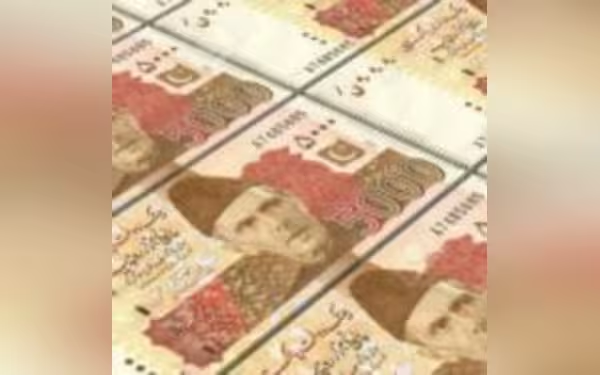Saturday, November 16, 2024 11:52 PM
Decline of Paper-Based Transactions in Pakistan's Financial Landscape
- Digital payments surge to 84% of total transactions.
- Paper-based transactions drop to just 8.9% by volume.
- Mobile banking transactions increase by 70% in fiscal year 2024.
 Image Credits: pakistantoday
Image Credits: pakistantodayPakistan sees a decline in paper-based transactions as digital payments rise to 84% of total volume, marking a significant shift in the financial landscape.
The landscape of financial transactions in Pakistan is undergoing a significant transformation, as highlighted in the recent annual payment system review released by the State Bank of Pakistan (SBP) on October 11. This report sheds light on the evolving dynamics of payment systems in the country, particularly the decline in paper-based transactions for the second consecutive year. The SBP's review is crucial as it provides insights into the national payments ecosystem, drawing data from various regulated entities, including banks, microfinance banks, electronic money institutions, and payment service providers.
Payments in Pakistan can be broadly categorized into wholesale and retail transactions. Wholesale payments, facilitated through the Real-Time Gross Settlement (RTGS) system, allow banks to transfer large sums instantly, which is essential for high-value transactions such as government securities. On the other hand, retail payments, which are more numerous but lower in value, are primarily processed by banks, microfinance banks, and electronic money institutions. These retail transactions encompass everyday consumer activities, including mobile payments, card-based payments, e-commerce transactions, and online banking transfers.
In fiscal year 2024, retail payments witnessed a remarkable surge, with the number of transactions increasing from 4.7 billion to 6.4 billion, marking a 35% rise. Digital payments have become increasingly dominant, accounting for 84% of the total transaction volume, up from 76% the previous year. This shift towards digital channels is largely attributed to the growing number of customers who prefer the convenience and variety of services offered through mobile banking apps and internet banking portals.
Branchless banking wallets have emerged as a significant player in the digital payments arena, representing 42% of total transaction volumes. The number of payments made through branchless banking mobile app wallets reached 2,697 million, while transactions via electronic money institution e-wallets also saw substantial growth. The value of transactions through these digital wallets has skyrocketed, with branchless banking app wallet transactions doubling to Rs 8.8 trillion.
Despite the impressive growth in digital transactions, traditional paper-based transactions are on the decline. Cash transactions via bank branches have decreased for two consecutive years, dropping from 599.1 million at the end of fiscal year 2022 to 571.2 million by the end of fiscal year 2024. However, the value of these transactions remains significant, with traditional bank branches processing Rs 447.7 trillion, resulting in an average transaction size of Rs 783,000.
The decline in paper-based transactions is stark. In 2020, paper-based transactions accounted for 45% of retail payments by volume, but this figure has plummeted to just 8.9% in 2024. Similarly, the value of paper-based payments, which dominated with a 94% share in 2020, has shrunk to 82% by the end of fiscal year 2024. This shift can be attributed to the high costs associated with time and convenience, as digital services offer quicker and more accessible alternatives.
Mobile banking continues to thrive, with transaction volumes increasing by 70% for the second consecutive year. The number of mobile banking transactions rose from 660.6 million to 1,122.8 million, while the value surged by 95%, reaching Rs 46.3 trillion. Internet banking also saw a 30% increase in transactions, reflecting the growing preference for digital banking solutions.
As we look to the future, it is clear that the financial landscape in Pakistan is rapidly evolving. The shift from traditional paper-based transactions to digital payments is not just a trend; it is a fundamental change in how people conduct their financial activities. This transformation offers numerous benefits, including increased efficiency, convenience, and accessibility for consumers. As more individuals embrace digital banking, it is essential for financial institutions to continue innovating and enhancing their services to meet the growing demands of a tech-savvy population. The future of banking in Pakistan is undoubtedly digital, and the journey has only just begun.













